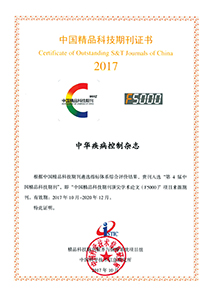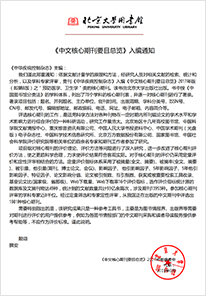2020 Vol. 24, No. 12
Display Method:
Prevalence study of neurocognitive functions and modifiable risk factors in HIV-infected individuals
2020, 24(12): 1365-1370.
doi: 10.16462/j.cnki.zhjbkz.2020.12.001
Abstract:
2020, 24(12): 1371-1375.
doi: 10.16462/j.cnki.zhjbkz.2020.12.002
Abstract:
2020, 24(12): 1376-1381.
doi: 10.16462/j.cnki.zhjbkz.2020.12.003
Abstract:
2020, 24(12): 1382-1386.
doi: 10.16462/j.cnki.zhjbkz.2020.12.004
Abstract:
2020, 24(12): 1387-1392,1440.
doi: 10.16462/j.cnki.zhjbkz.2020.12.005
Abstract:
2020, 24(12): 1393-1397.
doi: 10.16462/j.cnki.zhjbkz.2020.12.006
Abstract:
2020, 24(12): 1403-1406,1446.
doi: 10.16462/j.cnki.zhjbkz.2020.12.008
Abstract:
2020, 24(12): 1418-1422.
doi: 10.16462/j.cnki.zhjbkz.2020.12.011
Abstract:
2020, 24(12): 1423-1427,1432.
doi: 10.16462/j.cnki.zhjbkz.2020.12.012
Abstract:
2020, 24(12): 1428-1432.
doi: 10.16462/j.cnki.zhjbkz.2020.12.013
Abstract:
2020, 24(12): 1433-1440.
doi: 10.16462/j.cnki.zhjbkz.2020.12.014
Abstract:
2020, 24(12): 1441-1446.
doi: 10.16462/j.cnki.zhjbkz.2020.12.015
Abstract:
2020, 24(12): 1447-1451.
doi: 10.16462/j.cnki.zhjbkz.2020.12.016
Abstract:
2020, 24(12): 1459-1464.
doi: 10.16462/j.cnki.zhjbkz.2020.12.018
Abstract:
2020, 24(12): 1465-1469.
doi: 10.16462/j.cnki.zhjbkz.2020.12.019
Abstract:
2020, 24(12): 1470-1474.
doi: 10.16462/j.cnki.zhjbkz.2020.12.020
Abstract:
2020, 24(12): 1475-1478.
doi: 10.16462/j.cnki.zhjbkz.2020.12.021
Abstract:


 Email alert
Email alert RSS
RSS Abstract
Abstract HTML
HTML PDF
PDF





